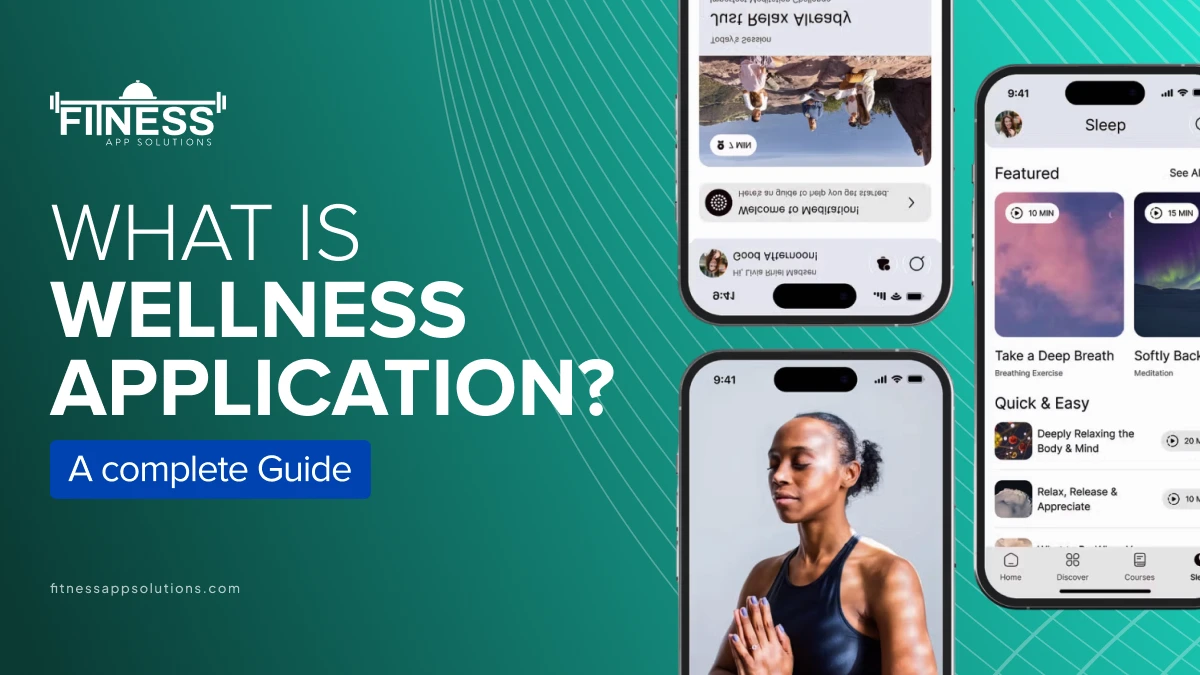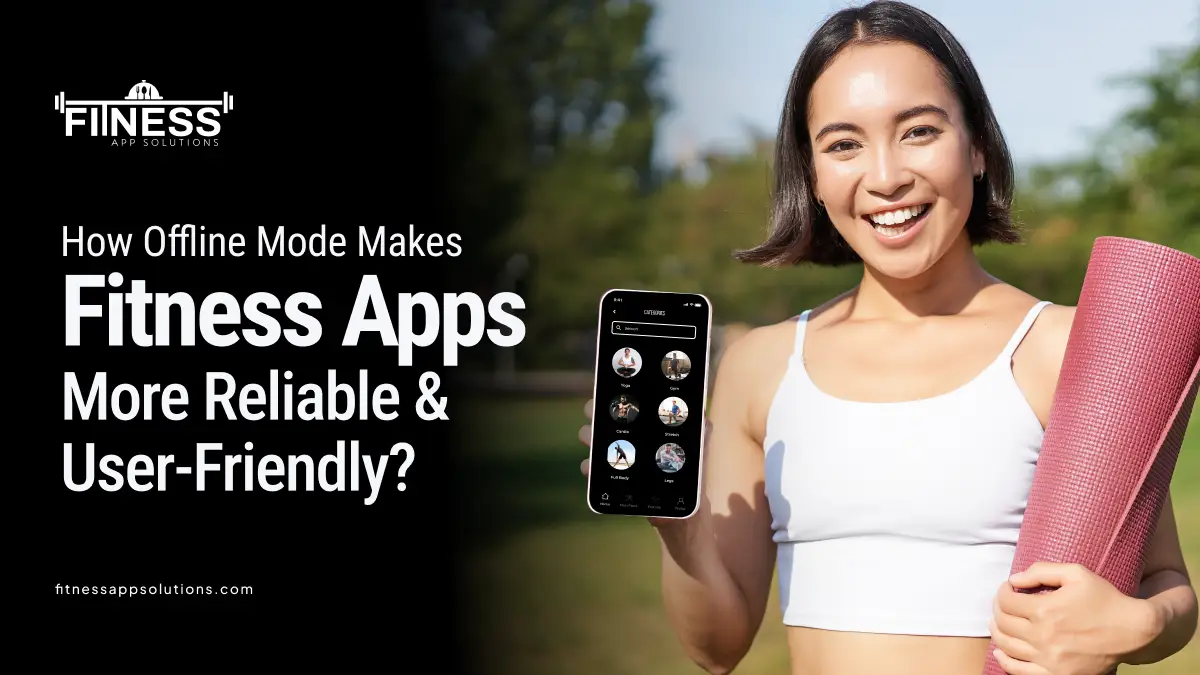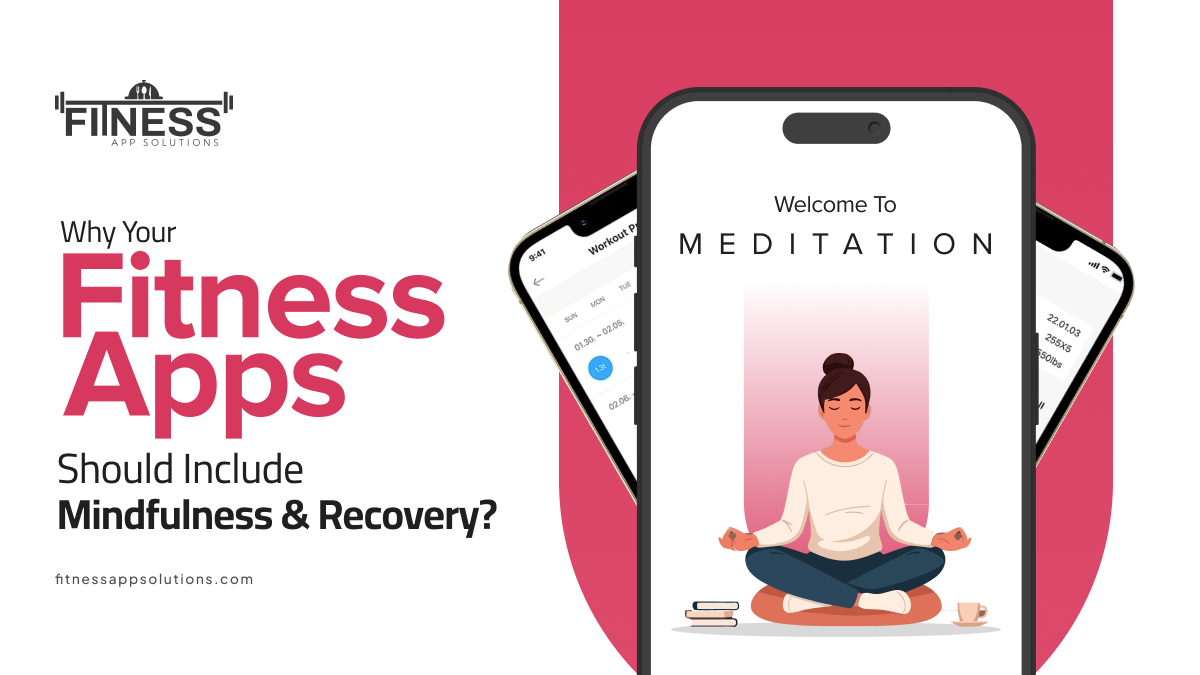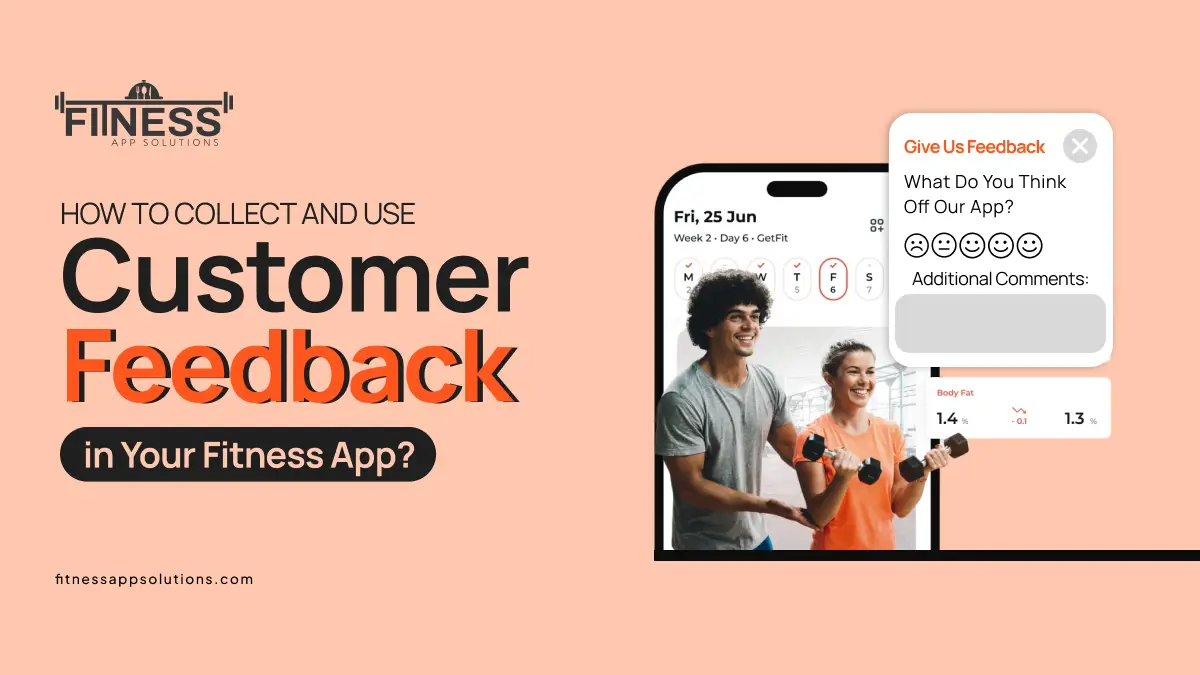Globally, over 95% of the population experiences some form of health issue. Also, the global wellness apps market size was priced at $11.27 billion in 2024 and is estimated to grow at a CAGR rate of 14.9% from 2025 to 2030 ( Source: Grand View Research). In this blog, we will explore what a wellness app is, its type, and what features health and wellness apps should include when creating wellness applications.
What are Wellness Applications?
Wellness apps are mobile devices that enable users to engage in guided wellness-related experiences. They are developed and designed to make the traditional practice of mindfulness more accessible to modern users by applying technologies.
Wellness apps can also incorporate tools like reminders, progress tracking, and community–based activities to aid in forming an ongoing habit. The main objective is to seamlessly incorporate mindfulness practices into day-to-day busy lives with the help of convenient, custom-designed fitness apps.
Types of Wellness Applications

1.Fitness Trackers
These wellness apps help track fitness routines, including exercise plans, videos, video conferencing equipment for online forums, and classes can also enhance these apps.
2.Meditation Apps
These apps are rising daily as they offer a mix of healing music and vibrations. These apps play mantras and soothing music that soothes the minds of those who have been doing a lot of meditation for some time. Moreover, this meditation app has impressive features like frequent reminder sessions, sleep stories, session logs, and online communities for socializing with others on Facebook, Instagram, and Twitter.
3.Nutrition Planners
With features like calorie counting, meal planning, and diet tracking, users can meet their weight-related goals faster without much effort. These apps rank among the top wellness platforms with integrated meal planning tools, providing access to nutrition data and valuable insights from experts.
4.Sleep Trackers
Software tools guide users in improving their sleep quality. They mostly offer features like sleep tracking, smart alarms, and analysis of sleep cycles.
5.Yoga and Meditation Apps
They usually offer breath exercises, mindfulness methods, meditation guides, and yoga classes for people with different expertise levels.
6.Employee Wellness Apps
Businesses launches this type of app for their teams. With the help of a wellness app, they can add health and wellness programs for their working colleagues. Also, they can offer psychological health assistance and also conduct health checkups.
Benefits of having a wealth and fitness App
By using fitness and health apps, clients can track their progress, set and reach goals, and help them stay motivated. By offering complete and personalized solutions tailored to the particular needs of your clients, you will also benefit from having a mobile app for your fitness and health-related business. This will result in longevity of growth and Loyalty by connecting you to clients and building relationships.
Increased Reach
You can engage a global audience by offering services beyond physical boundaries. Whether it’s workouts, nutrition tips, or coaching, everything becomes accessible anytime, anywhere
Personalizing Services
With user data, the app can tailor meal plans, workout routines, and wellness suggestions to individual needs. This Customization boosts user satisfaction and promotes better results, leading to higher engagement.
Improved Communication
Communication is also a game-changer. Through push notifications, in-app messaging, and updates, you can keep users informed, motivated, and supported on their health journey. This kind of ongoing interaction builds trust and fosters a strong brand-user relationship.
Earning Loyalty and retaining clients
Features like progress tracking, rewards, challenges, and goal achievements not only make the journey fun but also encourage users to stay committed. By creating a consistent and value-driven experience, your app becomes an essential part of their daily routine.
What are the features that Health and Wellness Apps should include?

1. Smart Sync & Seamless Integration
One of the core functionalities that can truly elevate a health and wellness app is its ability to seamlessly sync with various devices and platforms. This includes fitness trackers like Fitbit, Apple Watch, Garmin, and other smart wearables. Integration with platforms like Apple Health, Google Fit, and Samsung Health allows the app to collect and centralize data from multiple sources. This creates a comprehensive user profile and ensures users don’t need to manually enter information like steps, heart rate, or activity level. A smart sync system also makes the experience more user-friendly and efficient, increasing user satisfaction and retention.
2. Calorie Coach
Nutrition is a cornerstone of any wellness journey, which is why a robust Calorie Coach feature is essential. This tool allows users to log their meals, track calories consumed, and monitor macronutrient intake (carbs, proteins, fats). The best versions of this feature also offer barcode scanning, recipe suggestions, and AI-powered meal plans tailored to fitness goals such as weight loss, muscle gain, or maintenance. The Calorie Coach transforms passive tracking into active guidance, helping users make better dietary choices every day.
3. Hydration Hero
Many people underestimate the importance of proper hydration, making a Hydration Hero tracker a valuable inclusion. This feature lets users log their daily water intake and receive reminders to drink water throughout the day. Based on individual metrics like age, weight, and activity level, the app can recommend optimal hydration targets. Visual aids such as progress meters or animated water bottles can gamify hydration goals and make them more engaging. By encouraging consistent water intake, this feature supports better energy levels, improved digestion, and overall well-being.
4. Sweet Sleep Monitor
Sleep is one of the most vital but often neglected aspects of health. The Sweet Sleep Monitor feature provides insights into sleep quality, duration, and patterns. When synced with wearables or using phone sensors, it can track light, deep, and REM sleep cycles. More advanced sleep tracking may include snore detection, heart rate monitoring during sleep, and even stress recovery analysis. This feature can also provide personalized tips for improving sleep hygiene, such as optimal bedtime routines, limiting screen exposure, or adjusting room conditions. Quality sleep not only enhances physical health but also boosts mental clarity and emotional resilience.
5. Customization
No two users are the same, which makes Customization a crucial feature for any health and wellness app. The ability to personalize dashboards, set specific goals (e.g., “run 3 times per week” or “reduce sugar intake”), and select preferred activity types gives users a sense of ownership over their wellness journey. Customization also includes setting notification preferences, choosing interface themes, and tailoring motivational messages. The more control users have, the more invested they become—leading to increased long-term engagement.
6. Wellness Wins (Gamification)
To keep users motivated and engaged, integrating gamification elements is a must. The Wellness Wins feature introduces challenges, badges, leaderboards, streaks, and rewards for completing goals. For example, users might earn a badge for hitting 10,000 steps five days in a row or unlock a new challenge for maintaining hydration goals for a week. This approach transforms wellness from a routine into a fun, goal-driven adventure. It taps into our natural love for achievement and competition while reinforcing positive health habits.
Steps for Health and Wellness App Development
Assess the Market & objective
Do thorough market research to decide your audience preferences. Set particular goals like fitness tracking, nutrition advice or support for mental health to make sure that your app offers main benefit and address the issues of users.
Moreover, our expert provides valuable market research that helps shape your app’s objective in line with current trends. Through our mobile app creation services, we will make sure that the app’s idea is compatible with the Market’s requirements and appeals to the exact people.
Plan the Features
Create a feature list based on user needs and trends. Must-have features include:
- User Profiles
- Smart Sync with wearables
- Calorie/Nutrition Tracker
- Hydration & Sleep Monitoring
- Personalized Goals & Plans
- Gamification (Challenges, Badges)
- Push Notifications & Reminders
Prioritize core features for MVP (Minimum Viable Product) and plan additional ones for future updates.
Design the User Interface (UI/UX)
A health app must be clean, intuitive, and motivating. Design with simplicity in mind—use calming colors, clear progress-tracking visuals, and minimal clicks to log data. Include customization options so users feel the app is tailored to them
Choose the Right Tech Stack
Decide whether you’ll build a native app (iOS, Android) or a cross-platform app using frameworks like Flutter or React Native. Your backend should be scalable and secure, with tech like:
- Firebase, AWS, or Azure for cloud services
- HealthKit/Google Fit APIs for data sync
- AI or ML for personalized recommendations.
Develop the App (Frontend & Backend)
- Now it’s time to build! Start with:
- Frontend: Building the actual user-facing part of the app.
- Backend: Creating the servers, databases, and logic that power your app.
Ensure the app includes secure login, encryption, and HIPAA-compliant data storage if dealing with sensitive health information.
Integrate APIs and Wearables
Integrate third-party APIs and sync with smart devices like Apple Watch, Fitbit, and Google Fit. This step boosts data accuracy and allows for real-time activity tracking.
Test Thoroughly
Extensive QA testing is conducted to ensure smooth performance across devices. Include:
- Functional testing
- Usability testing
- Security testing
- Performance/load testing
Beta testing with a small user group can provide valuable feedback before the public launch.
Launch and Monitor
Deploy the app on the App Store and Google Play. Use analytics tools to track user behavior, engagement, and retention. Be ready to fix bugs quickly and gather reviews to guide your first updates.
Post-Launch Support and Updates
Keep improving the app based on user feedback. Add new features, enhance security, and keep content fresh. Regular updates ensure your app remains competitive and valuable over time.
By following these steps, you can build a robust, user-friendly, and engaging health and wellness app that truly supports users in living healthier lives. Let me know if you’d like a checklist, timeline, or project roadmap based on this!
Final Thoughts
A wellness app is more than just a digital tool. It’s a personal companion on your journey toward better health, balance, and well-being. Whether it focuses on fitness, nutrition, mental health, sleep, or an all-in-one approach, a wellness app empowers users to take control of their lifestyle in a convenient, personalized, and motivating way.
This ultimate guide covered everything from essential features like Smart Sync, Calorie Coaching, and Sleep Monitoring to the strategic steps in app development from concept and research to launch and beyond. What sets a great wellness app apart is its ability to combine technology with empathy, offering smart, seamless, and human-centered support.
Frequently Asked Questions (FAQ)
1.What is the purpose of a wellness app?
Wellness apps aim to improve different aspects of a user’s well-being, including physical fitness, mental health, sleep quality, nutrition, and daily habits.
2.Are wellness apps suitable for everyone?
Yes, wellness apps are designed for a wide audience. Whether you’re a beginner or someone experienced in health and fitness, most apps offer customizable experiences based on your goals.
3.Do wellness apps really work?
Yes, when used consistently, wellness apps can help users build better habits, track health metrics, reduce stress, and improve overall well-being. However, effectiveness varies based on user commitment and app quality.
4.Can wellness apps replace a therapist or doctor?
While wellness apps can support mental and physical health, they are not substitutes for professional medical or psychological care. Always consult a professional for serious concerns.
5.Can wellness apps track physical activity?
Yes, many integrate with fitness trackers and smartphones to monitor steps, exercise routines, calories burned, and heart rate.



